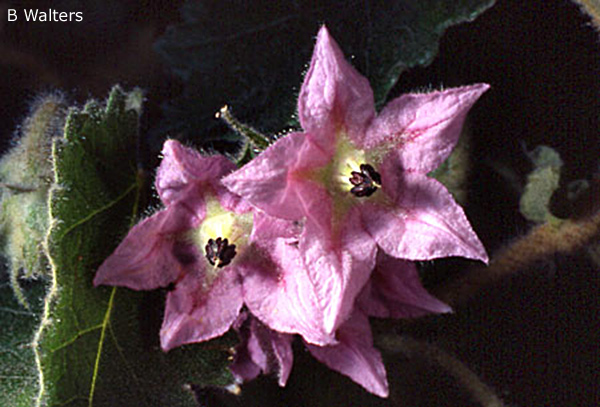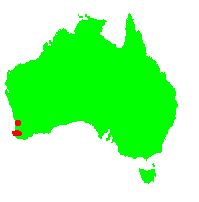General Description:
Thomasia is a genus of about 32 species, all occurring in Western Australia with one (Thomasia petalocalyx) also extending to South Australia and Victoria. Thomasias are generally small to medium shrubs in which the calyx of the flower is more prominent than the petals. The genus is closely related to Guichenotia, Lasiopetalum and Lysiosepalum.
Thomasia macrocarpa is a small, rounded shrub to about 1.5 metres high. The grey-green leaves are egg to heart-shaped, toothed and about 45 mm long. They are velvety when young and become smooth as they age. The pink to purple flowers occur in late winter and spring and are very conspicuous. They are about 10 mm in diameter and are followed by capsules containing black seeds which are shed from the plant when ripe. White flowers are sometimes seen.
Large fruited thomasia is popular in cultivation although it is best suited to areas with a dry summer climate. It can be difficult to maintain for long periods in districts with a humid summer. It requires well drained soils and will grow in full sun or partial shade.
Propagation can be carried out from seed but germination can be unreliable. Cuttings of firm, current season’s growth usually strike reliably.

Thomasia macrocarpa
Photo: Brian Walters
 Australian Native Plants Society (Australia)
Australian Native Plants Society (Australia)